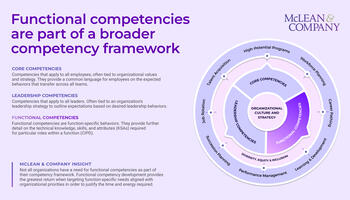- Poor feedback skills result in raters providing feedback that is vague and inaccurate and ratees being unable to interpret and respond to the feedback effectively.
- Lack of follow through by ratees negates the purpose of the process, making the entire assessment a waste of time and resources.
Need Extra Help?
Speak With An Analyst.
- Get on-demand project support
- Get advice, coaching, and insight at key project milestones
- Go through a Guided Implementation to help you get through your project

Our Advice
Critical Insight
A 360 assessment is more than just a plug-and-play assessment. A clear definition of its purpose supported by a strategic roadmap is required to maximize the benefits to both employee development and organizational goals.
Impact and Result
- Thoughtfully design and implement the 360 feedback process for developmental purposes to overcome common obstacles and realize employee and organizational benefits such as retention and engagement.
- Evaluate if the organization has foundational elements in place and is culturally ready for a 360 review process to ensure they have a positive impact on employee development.
- Provide sufficient training so that ratees and raters understand the purpose, their role, and how to provide and interpret relevant feedback.
- Ensure ratees create an employee development plan, have the opportunity for targeted learning and development, and receive the support they need to address feedback.
Strategically Develop a 360 Feedback Process
Maximize 360 feedback effectiveness through purposeful planning and implementation.
Executive Summary
McLean & Company Insight
A 360 feedback assessment is more than just a plug-and-play assessment. A clear definition of its purpose supported by a strategic roadmap is required to maximize the benefits to both employee development and organizational goals.
Situation
- Employees work with many different people both inside and outside their organization, yet often only receive feedback from one person – their manager. Without a 360 feedback assessment, employees lack access to a holistic and valuable view of their behavior from multiple perspectives.
- Some organizations use 360s for performance-based decisions, which often backfires, leading to negative consequences including a culture of mistrust, skewed feedback, and legal issues.
Complication
- Poor feedback skills result in raters providing feedback that is vague and inaccurate and ratees being unable to interpret and respond to the feedback effectively.
- Lack of follow-through by ratees negates the purpose of the process, making the entire assessment a waste of time and resources.
Solution
- Thoughtfully design and implement the 360 feedback process for developmental purposes to overcome common obstacles and realize employee and organizational benefits such as retention and engagement.
- Evaluate if the organization has foundational elements in place and is culturally ready for 360s to ensure they have a positive impact on employee development.
- Provide sufficient training so ratees and raters understand the purpose, their role, and how to provide and interpret relevant feedback.
- Ensure ratees create an employee development plan, have the opportunity for targeted learning and development, and receive the support they need to address feedback.
A 360 feedback assessment provides individuals with a holistic view of their behavior
360 Feedback Assessment
360 feedback is the process of aggregating multiple raters’ observations and perceptions of an employee’s proficiency in specific competencies and job expectations for developmental purposes. This is usually tracked over time by executing follow-up 360s, enabling more targeted individual development plans.
Other names: 360 feedback is also referred to as multi-rater feedback, multisource feedback, or multisource assessments.
360 Feedback
|
VS. |
Crowdsourced Feedback (CSF)
|
360 feedback often has the following elements:
Purpose defines the link to employee/leadership development and outlines the integration into other HR programs (e.g. high-potential program).
Participants normally involve an employee’s manager, direct reports, and peers as well as a self-evaluation. In some cases, 360 feedback can also come from internal or external clients of the employee or the skip-level manager.
Competencies reflect the role-specific knowledge, skills, and attributes that are most important to the success of the 360 participant. They are described by behavioral statements that are the foundation of the assessment questions.
 Develop a Talent Management Framework
Develop a Talent Management Framework
 Develop Core and Leadership Competencies
Develop Core and Leadership Competencies
 Create Functional Competencies
Create Functional Competencies
 Strategically Develop a 360 Feedback Process
Strategically Develop a 360 Feedback Process
 Develop a Leadership Strategy to Drive Organizational Results
Develop a Leadership Strategy to Drive Organizational Results